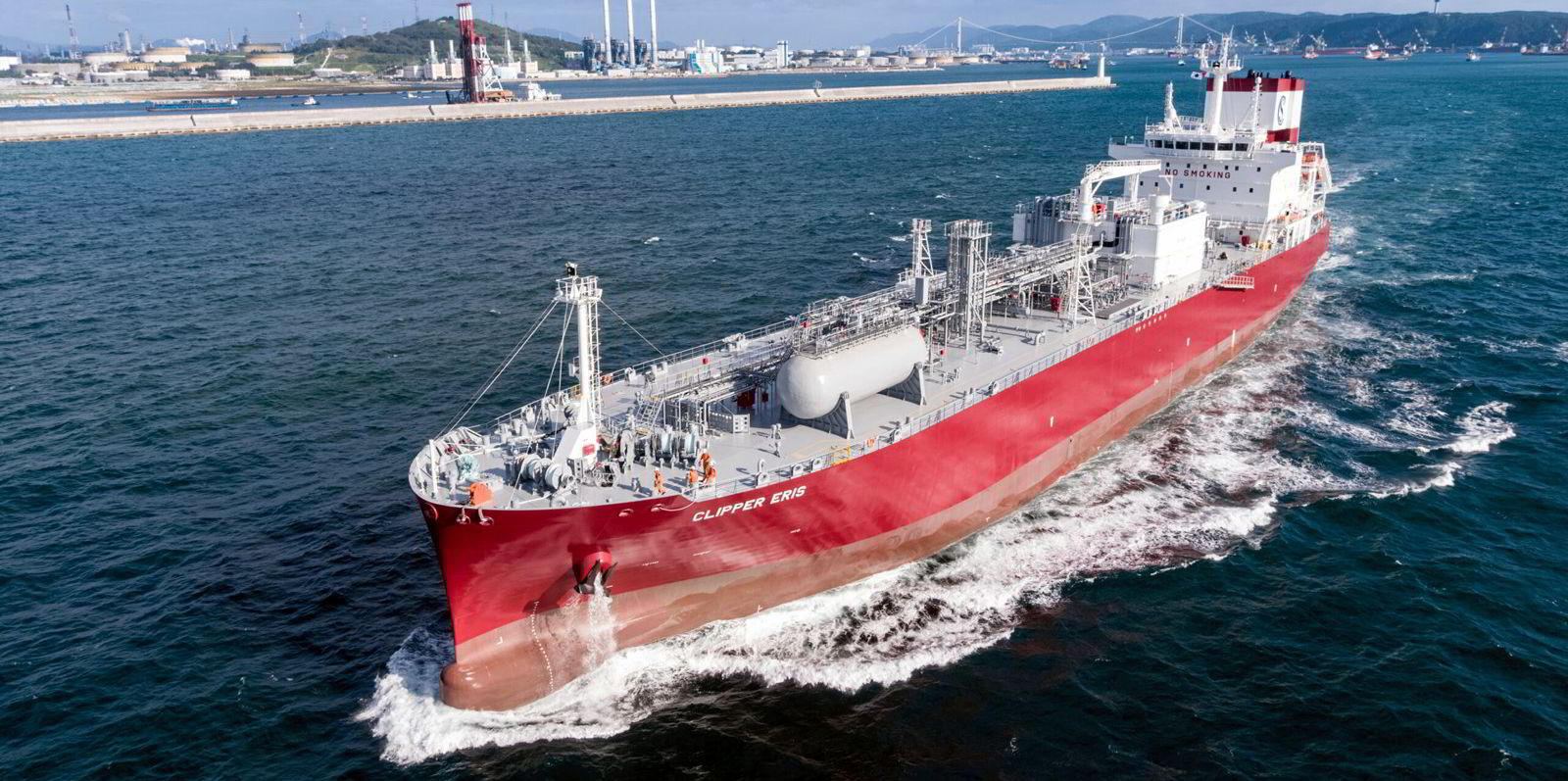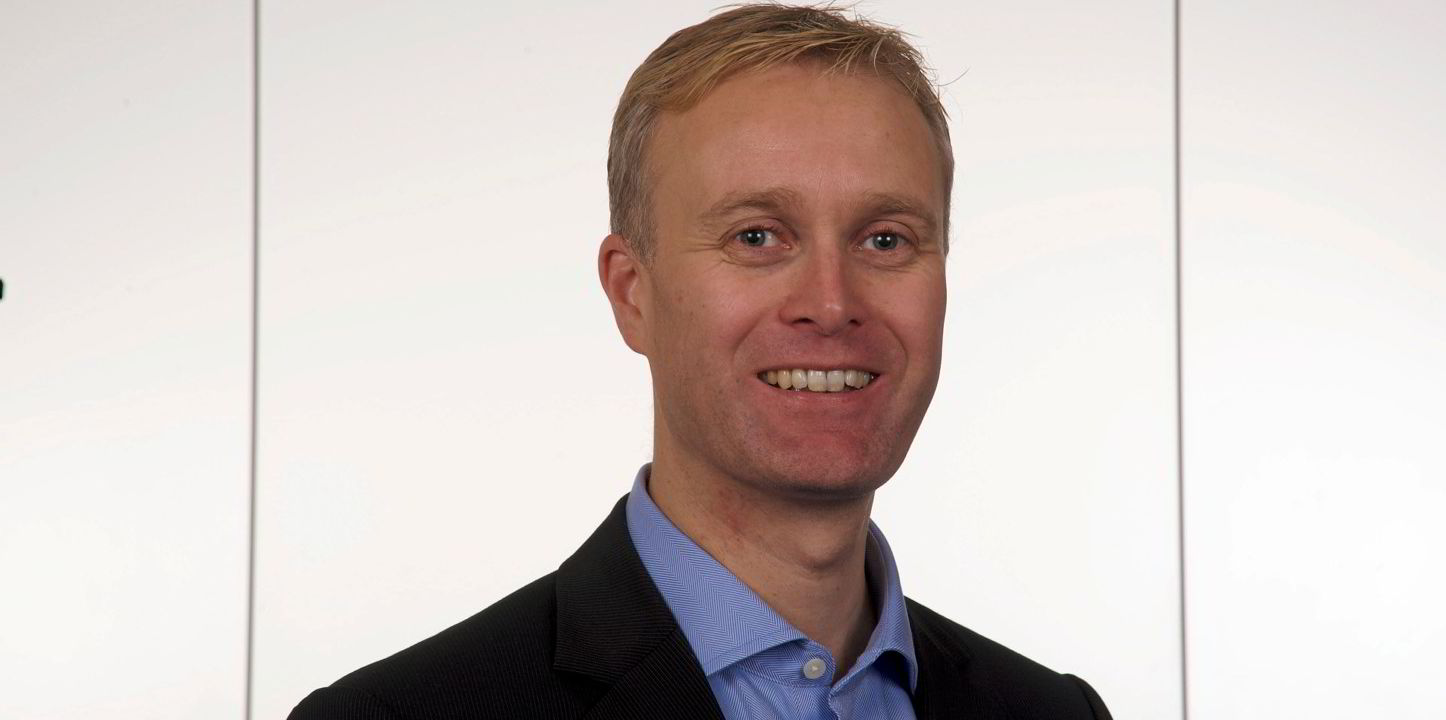Solvang has won Norwegian government funding for its plans to install a carbon capture and storage system on an ethylene carrier.
Chief executive Edvin Endresen said the Enova programme has awarded the shipowner NOK 80m ($8m).
He told TradeWinds that the funding is important recognition from the technical community for carbon capture on ships.
“It’s also extremely important to actually get this up and running because, let’s face it, it’s not going to be a profitable business from day one,” he said. “So we need to get started.”
Oslo-headquartered Solvang has been working with Wartsila and research institute Sintaf to bring a carbon capture system to the 21,200-cbm gas carrier Clipper Eris (built 2019).
Installation is planned for June next year on a timetable delayed by the time it has taken to secure long-lead items for the project.
Onshore testing at Wartsila’s facility in Moss, Norway, has led to expectations that the system will capture 70% of the CO2 in the Clipper Eris’ exhaust gas.
The project’s new funding is part of NOK 709m awarded by Enova to the shipping industry. Controlled by the Ministry of Climate & Environment, Enova runs a fund focused on projects focused on greenhouse gas emissions and energy transition.
Other projects backed by the package announced on Tuesday include ASKO Maritime’s all-electric propulsion system for two container ro-ros; Moen Marin’s fully electric passenger vessel for the fishing industry; Viasea Shipping’s plans to build a pair of hydrogen-powered container ships; and an effort by North Sea Container Line and Yara Clean Ammonia to build a battery-hybrid boxship fuelled by ammonia.
Endresen said his company sees carbon capture as one of many solutions to shipping’s greenhouse gas challenge.
“Carbon capture combined with existing cleaning technology is a significant shortcut to the decarbonisation of the world’s deepsea fleet and stands out as one of the more promising solutions for the ships of the future,” he said.

“With support from Enova, it is possible to start the pilot project on board the ship and test both technology and value chain.”
He said tests have been very successful. The main challenge has been minimising energy consumption by the carbon capture system.
If the two-year Clipper Eris pilot is successful, Solvang intends to install carbon capture systems on five newbuildings it has ordered for delivery in 2026 and 2027.
“We’re … actively working on newbuilds with this installed instead of a dual-fuel solution, which everybody else is going for. We believe that this is really a next-generation vessel, not the dual fuel,” Endresen said, referring to gas carriers that can run on LPG or heavy fuel oil.
Dual-fuel vessels achieve only 13% to 14% lower emissions compared with heavy fuel oil, he said, whereas Solvang’s newbuildings would do better with their scrubbers, exhaust gas recirculation and carbon capture.
“Add 10% to 20% biofuels and you’ll have a zero-emission vessel,” he said.




